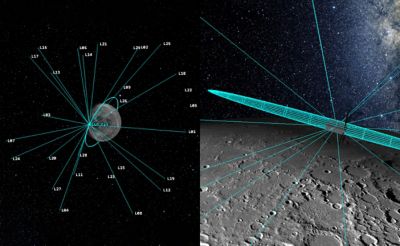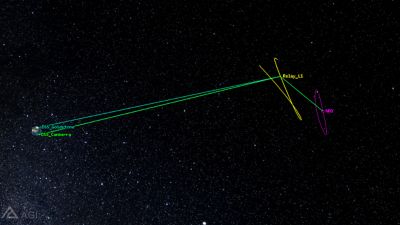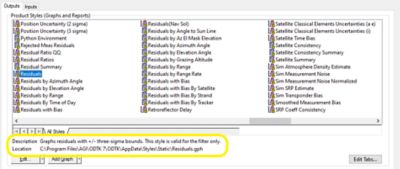-
-
Software gratuito per studenti
Ansys potenzia la nuova generazione di ingegneri
Gli studenti hanno accesso gratuito a software di simulazione di livello mondiale.
-
Connettiti subito con Ansys!
Progetta il tuo futuro
Connettiti a Ansys per scoprire come la simulazione può potenziare la tua prossima innovazione.
Paesi e regioni
Customer Center
Supporto
Partner Community
Contatta l'ufficio vendite
Per Stati Uniti e Canada
Accedi
Prove Gratuite
Prodotti & Servizi
Scopri
Chi Siamo
Back
Prodotti & Servizi
Back
Scopri
Ansys potenzia la nuova generazione di ingegneri
Gli studenti hanno accesso gratuito a software di simulazione di livello mondiale.
Back
Chi Siamo
Progetta il tuo futuro
Connettiti a Ansys per scoprire come la simulazione può potenziare la tua prossima innovazione.
Customer Center
Supporto
Partner Community
Contatta l'ufficio vendite
Per Stati Uniti e Canada
Accedi
Prove Gratuite
ANSYS BLOG
February 3, 2023
Check Out the New Ansys Orbit Determination Tool Kit (ODTK) Features
We look forward to empowering our users to lead the way in lunar and cislunar orbit regimes with the 2023 R1 Ansys Orbit Determination Tool Kit (ODTK) release. Whether you operationally fly a spacecraft in lunar orbit or analyze future mission architectures, the latest updates in ODTK have something for you.
Earth-Based GNSS in Cislunar Space
Missions such as the magnetospheric multiscale (MMS) mission have already demonstrated the use of existing global navigation satellite system (GNSS) signals in cislunar space. To accommodate this use case — which we anticipate becoming common — existing GNSS measurement models (pseudo-range and carrier phase) have been updated to use in cislunar orbit.
While listening to GNSS satellites is much more difficult at the long distances required to reach cislunar space, these signals can still serve as a powerful navigation aid when collected. ODTK can now process whatever raw GNSS measurements you can collect, regardless if your spacecraft is in orbit around the Earth, the Moon, or somewhere in between.
GNSS About the Moon

Spacecraft navigation using a Moon-centered GNSS constellation.
Many proposed lunar system architectures incorporate the presence of a global navigation system in the lunar environment. Accordingly, ODTK can now accommodate the definition of a Moon-centered GNSS and simulate and process measurements of these systems by both orbiting and ground-based receivers. The ability to model a Moon-centered GNSS — and evaluate the service provided to navigation users in the vicinity of the Moon — is essential to execute future lunar architecture trade studies.
Measurement Model Upgrades and Additions

Relayed range and doppler tracking of a satellite in a near rectilinear halo orbit (NRHO) near the Moon using a relay satellite located near the Earth-Moon L1 point.
Every time we think have our measurement model bases covered, our users prove us wrong by happily submitting requests for more. Each release, we do our best to comply, and this release is no exception. For example, we added models for ground- and space-based right ascension rate and declination rate measurements. These new additions to the ODTK measurement model family will support new optical instruments capable of providing independent angle rate measurements in addition to the typical astrometric right ascension and declination angles.
We have also added one-way space-to-ground and one-way space-to-space measurement models. These one-way models play an important role in time transfer analyses between the terrestrial and lunar domains.
Finally, we upgraded the following relayed range and Doppler models to support measurements involving ground stations and satellites about different central bodies.
- One-way bistatic range and Doppler
- 3L and 5L Doppler
- 4L Range
- BRTS Range and Doppler
For example, you can now use ODTK to model one-way bistatic range measurements from an Earth-based ground station passing through a relay in orbit near the Earth-Moon L1 point and ending at a lunar ground station.
Product Generation Improvements
The ability to regenerate graphs upon scenario load has found its way from Ansys Systems Tool Kit (STK) over to ODTK. Requested by users who were fond of this capability in STK (you know who you are), this feature reopens graphs from when the scenario was saved when it is reloaded. We also wanted to help Static Product Builder users find the graph or report style they need more efficiently. So, we added a style description field to the user interface. When you click on a style, you will now see a brief description of the style in addition to the full path and file name for that style.

ODTK Static Product Builder with new style descriptions.
Additional New ODTK Features
Of course, there are always odds and ends to address as well. Here are a couple of smaller items that we added.
- DSN station masks have been added to the DSNetwork tracking system to improve simulation realism.
- The option to output state-error covariance represented in orbital elements has been added to the State File Dumper utility to provide complete uncertainty quantification in terms of orbital elements.
We hope you enjoy the new and improved capabilities in Ansys Orbit Determination Tool Kit (ODTK). To see these new improvements in action, be sure to register for our upcoming webinar Navigating Lunar and Cislunar Space with ODTK on February 21, 2023, at 11 a.m. EST.